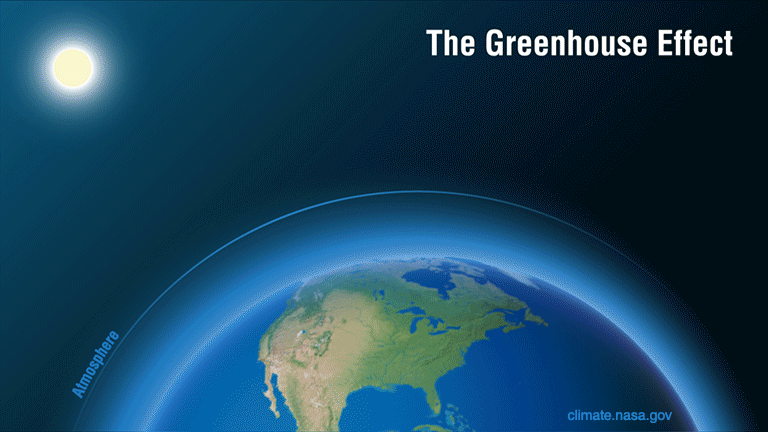What is Climate Change?
a simplified description of the issue
Climate change is the combination of relatively slow, natural and human-caused alterations to Earth’s weather and ocean patterns. When people think of climate change, they often think of global warming. However, climate change affects not only temperature but also precipitation patterns on regional scales. This means that a person living in Florida will experience climate change differently than someone in the Pacific Northwest.
Earth is no stranger to a changing climate. For millions of years, a combination of many factors has caused it to move between cold (glacial) and warm (interglacial) periods. During glacial periods, sea levels decrease because a substantial amount of water is stored on land as ice. Interglacial periods have high sea levels. This, combined with shifting land masses, create atmospheric and oceanic flows that play critical roles in regional climate.
Different orbital characteristics (called Milankovitch cycles) are responsible for transitioning Earth from a glacial to interglacial period, and vice versa. The oval-shaped orbit around the sun (eccentricity), the tilt of the earth (obliquity) and the “wobble” of Earth’s axis (precession), or a combination of the three, will dictate temperatures that either promote or inhibit glacial formation.These cycles create a small shift in the temperature, which then alters the carbon dioxide concentration in the atmosphere, which then alters the temperature, etc. On much shorter timescales, events such as volcanic eruptions, sun spots, and asteroid impacts can play a role in influencing the climate. However, with respect to Milankovitch cycles, which take tens of thousands of years to move from one phase to another, these impacts are relatively short lived.
When Milankovitch cycles alter carbon dioxide (and other greenhouse gas) concentrations, Earth retains more energy than it would with fewer greenhouse gasses in the atmosphere. The greenhouse effect, as this has come to be called, can be thought of as someone putting a blanket over them before going to sleep. A person gives off heat, just like earth. Without a blanket, a person’s heat would be able to escape to the room, making sleeping conditions too cold. This resembles an earth without any greenhouse gasses. With a blanket of the proper thickness, the person would “trap” just the right amount of heat to remain comfortable throughout the night. This resembles the climate system humans, and all other living creatures, have adapted to over time. However, using too thick of a blanket will cause a great amount of discomfort. This is what we are currently witnessing with our atmosphere: too high of concentrations of greenhouse gasses, raising the temperature beyond what we are adapted to.
A simplified animation of the greenhouse effect. Credit: NASA/JPL-Caltech
So, are these Milankovitch cycles, in combination with their influence on the greenhouse effect, what we are witnessing with respect to our current climate? Not quite… Again, this process would happen over many thousands of years. However, what we are seeing today is occurring on much faster timescales and with carbon levels not seen in any of our proxy data (how we look at previous climate regimes that were not analyzed with instrumentation) stretching back over 800,000 years. The rate of warming predicted for the 21st century is nearly 50 times faster than the rate of warming when the planet emerged from the last ice age (Dessler 2012). Further, rather than a temperature change causing a change in carbon dioxide, we are seeing a change in dioxide occur before temperature, where the temperature is trying to catch up to reflect the ever increasing carbon dioxide levels.
At this rate, natural causes cannot be the reason for our increased greenhouse gas concentrations or increases in temperature. In fact, if we were only witnessing natural variations in climate, Earth’s temperature would be cooling due to a less active sun. The cause of the increased greenhouse gasses is from the excessive burning of fossil fuels, which has been occurring at a large scale since the Industrial Revolution. Fossil fuels have played an integral part in increasing the standard of living of many people around the world. However, their being the primary driver of climate change has (and has been) negatively impacting countless countries and communities across the world, including the United States. In order to stop human-caused climate change, we must reduce the amount of fossil fuels burned and remove a great deal from our atmosphere.

